Marble figure on the left squinch of the doorway: St. James the ElderSince Saint-Sernin was a major stop on the pilgrimage to Santiago de Compostela, it was logical to include this saint. He is in the place of honor at Christ's right (our left). He stands between two tree trunks terminating in grotesque head and he raises his right hand in blessing. Above him two figures are enclosed in vines and below him an unidentified motif is depicted. Two women riding small lions are pulled closer together by a man who has grasped their heads.
|
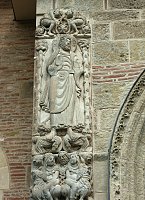
|
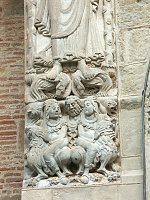
|

|
| |
|
Marble figure on the right squinch of the doorway: St. PeterHere Peter stands with his right hand raised in blessing while he touches with his left hand the symbolic keys anchored in his belt. Above him two angels hold Eucharist wafers with cross-shaped emblems, no doubt a reference to role of the pontiff. Hearn explains that "the figure of Peter probably symbolizes the papacy, which in the previous century had rescued the canons of Saint-Sernin from displacement by Cluniac monks" 9141). Below Peter is Simon Magus, who attempted ascension, supported by two demons. An inscription identifies him. Simon Magus is associated with simony--the selling of ecclesiastic offices. His failed ascension contrast with the motif of Christ's ascension in the tympanum.
|
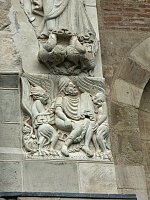
|
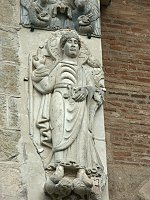
|

|
| |
|
Consoles supporting the lintelOn the left King David holds a lyre and bow; David is included as a symbol of Christ's lineage. On the right two figures in Phrygian caps ride (or subdue?) lions. Each figure has one bare foot and one with a pointed-toe boot. |
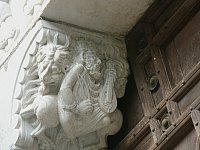
|
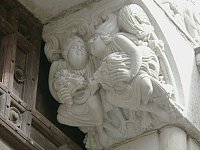
|
| |
|
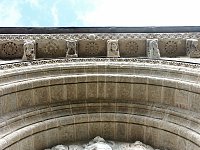
|
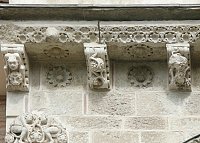
|
Modillions on the cornice above the door |
| |
|
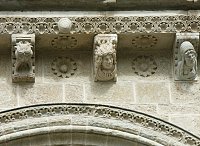
|
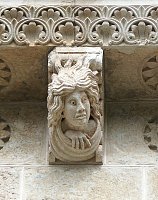
|
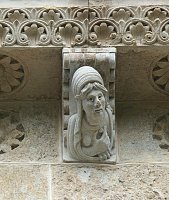
|


 Go to Saint-Sernin Index.
Go to Saint-Sernin Index. Click here to return to index of art historical sites.
Click here to return to index of art historical sites.
 Click here to return to index of artists and architects.
Click here to return to index of artists and architects.
 Click here to return to chronological index.
Click here to return to chronological index.
 Click here to see the home page of Bluffton University.
Click here to see the home page of Bluffton University.

